If you're a fan of deep-sky observing challenges, this one is for you. Our astronomy tour is based on Patrick Moore’s Caldwell Catalogue. Some of these Caldwell objects are quite popular, others are a bit lesser known, but hopefully you’ll be discovering some of these for the first time.
The minimum size telescope for this challenge is a 4-inch refractor: all 15 objectsare within reach of this instrument under dark skies.
Larger apertures will certainly help though, revealing hidden details that may otherwise elude you.
We would suggest you attempt the challenge when the Moon is out of the way, wear suitable warm clothing and have hot drinks on hand.
You could also involve some astronomer friends in the Caldwell challenge and make it a special occasion.
More deep-sky tours:
- 8 Messier Objects to spot in the night sky
- 6 planetary nebulae to spot in the night sky
- Take an astronomy tour of the Andromeda Galaxy
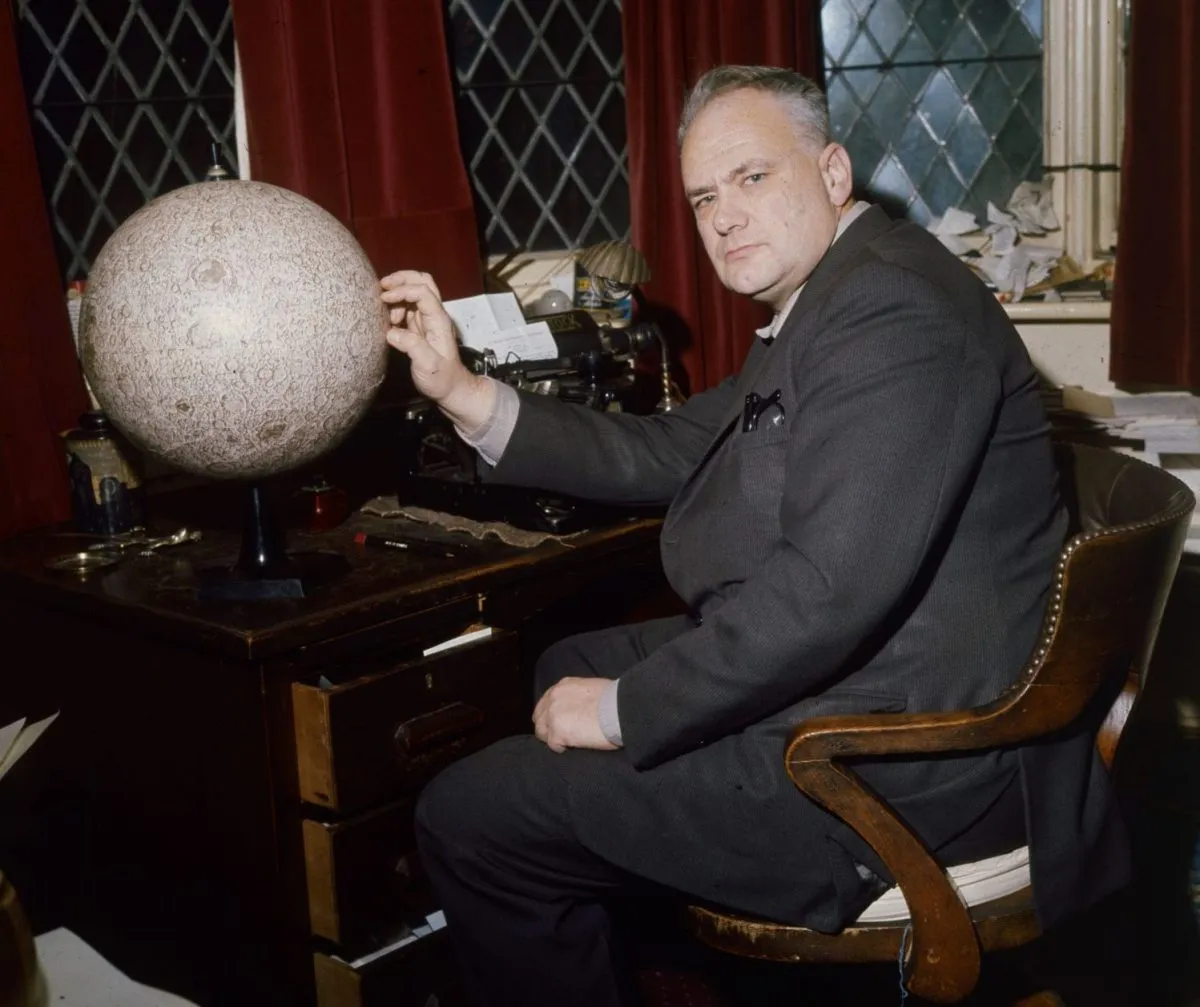
The origins of the Caldwell Catalogue
The Caldwell Catalogue came about because Patrick Moore felt that the Messier Catalogue – a list of objects that comet hunters should avoid – was somewhat incomplete. So he drew up a list of his own favourite objects, all absent from Messier’s magnum opus.
With the ‘M’ of Moore already taken, Patrick opted to use the ‘C’ of Caldwell for the objects in his list, as his full surname wasCaldwell-Moore.
Patrick’s catalogue contains 109 objects, but unlike Messier’s they are spread across both the northern and southern hemispheres. It includes 28 open clusters, 18 globulars, 35 galaxies, 13 planetary nebulae, 12 bright nebulae, one darknebula and two supernova remnants, arranged in order of declination.
1
NGC 752
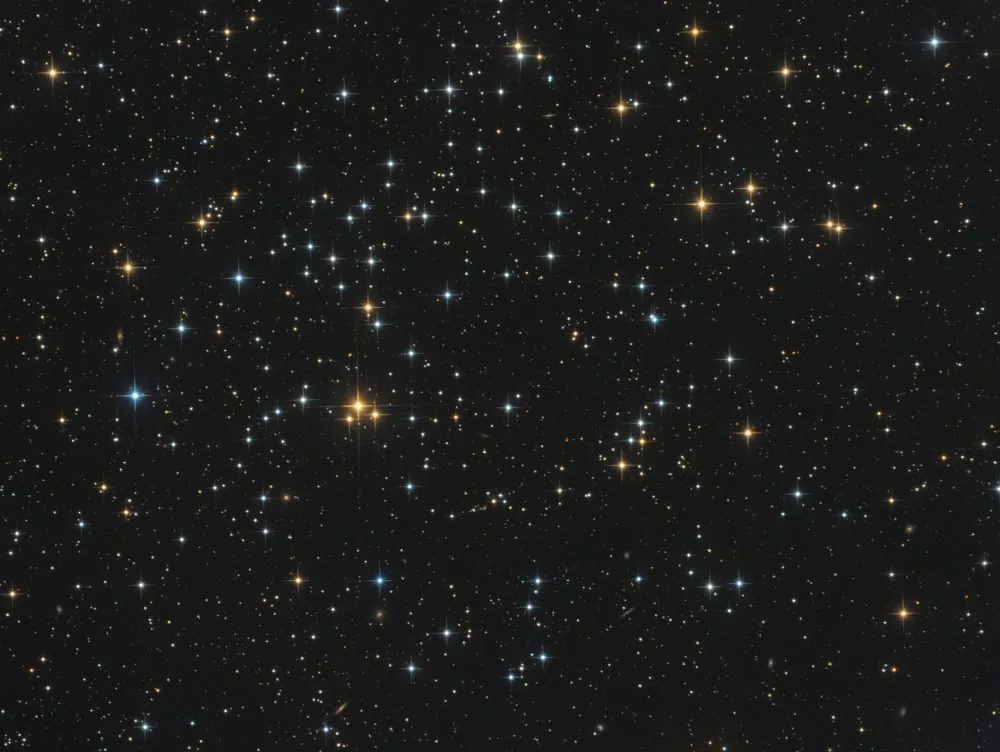
- Also designated C28
- RA 01h 57m 48s, dec. 37° 41’ 00”
We start our challenge with a fine binocular object originally discovered by Caroline Herschel in 1783. Open cluster C28, also known as NGC 752, lies one-third of the way between mag. +2.3 Almach (Gamma (γ) Andromedae) and the apex star in the constellation of Triangulum, mag. +3.4 Metallah (Alpha (α) Trianguli).
It can be easily found by sweeping between the two stars and, at almost two billion years old, this is one of the oldest star clusters known. Binoculars will show in the region of 30 widely scattered stars, although a rich-field telescope at low magnification is the best way to really enjoy this lovely object, revealing in excess of 60 individual member stars, more than a dozen of which are brighter than mag. +10.0.
2
NGC 891
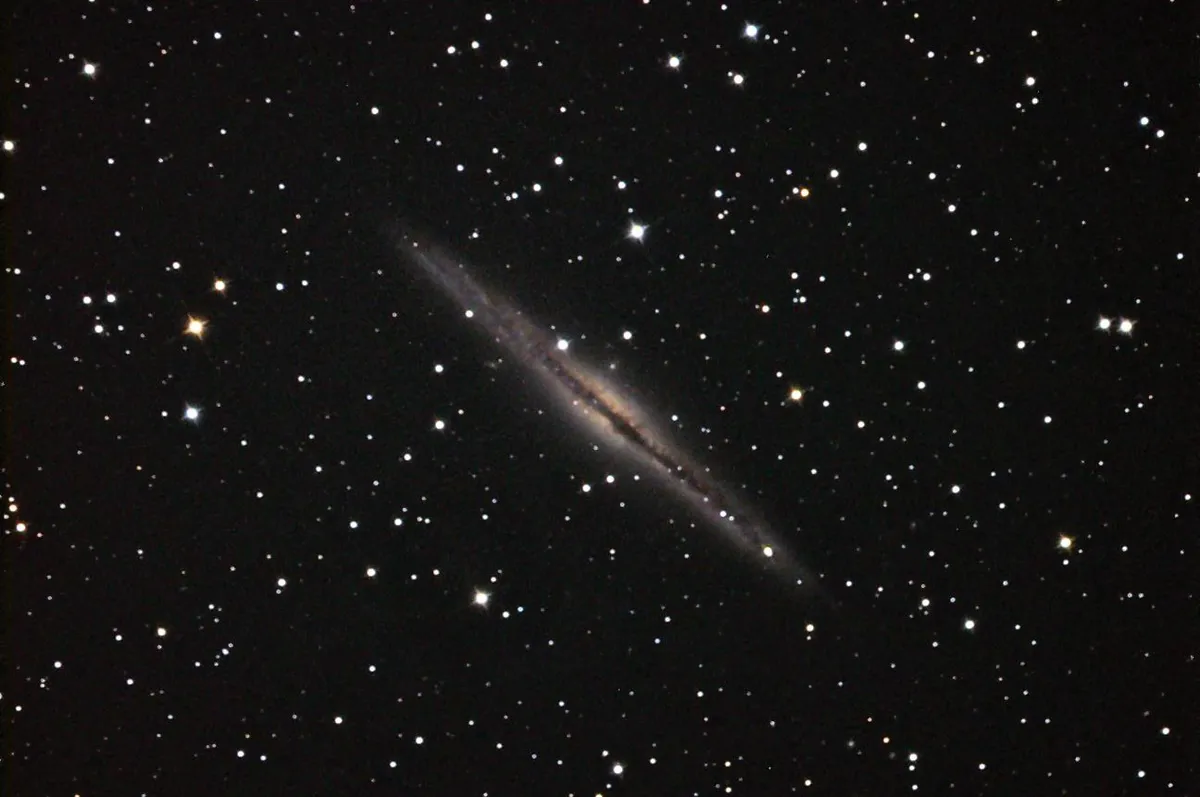
- Also designated C23
- RA 02h 22m 36s, dec. 42° 21’ 00”
Moving nearly 7° northeast now, your second object lies one-third of the way along a line joining the stars Almach and mag. +2.1 Algol (Beta (β) Persei). We’re looking for mag. +9.9 edge-on galaxy NGC 891, and although it is visible in a 4-inch telescope its low surface brightness means you may need to use averted vision.
It is worth lingering here a little as more and more detail will be revealed as your eye becomes accustomed to the view. If you can increase your aperture and up the magnification to around 120x, with careful scrutiny you should discern a slender dark dust lane bisecting the galaxy.
This object too was originally discovered by Caroline Herschel in 1784 and it is believed to be over 30 million lightyears away from us.
3
The Double Cluster
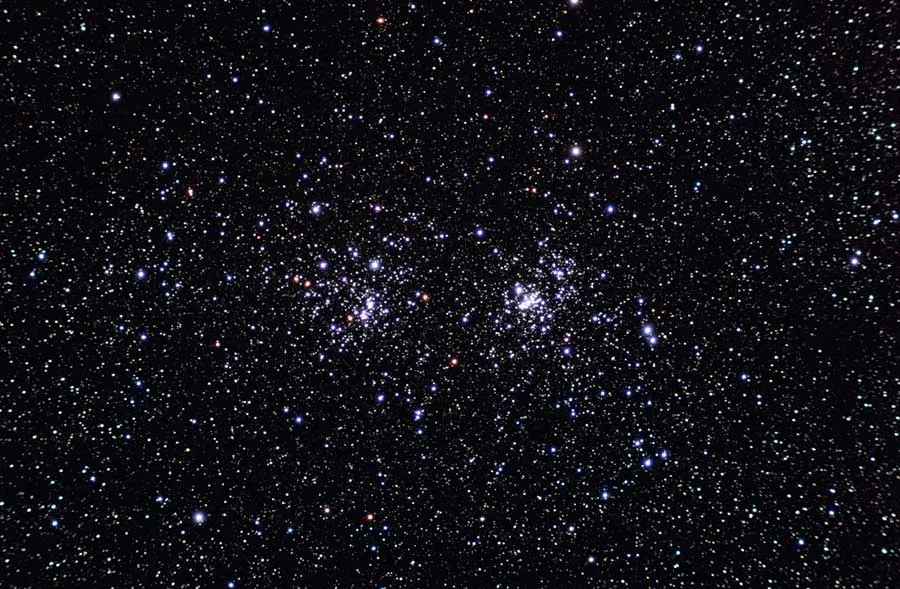
- Also designated C14; NGC 869 & NGC 884
- RA 02h 19m 00s, dec. 57° 09’ 00”
Continuing our journey into Perseus, your next target is a real treat, two objects for the price of one! NGC 869 and NGC 884 are popularly known as the Double Cluster today; in antiquity it was the Sword Handle, referencing the jewel-encrusted sword given to Perseus by Athena and Hermes to help him behead the Gorgon Medusa; the latter is represented by the star Algol.
The individual clusters are a fine sight through binoculars and can be seen with the naked eye from a dark location. A binocular sweep between mag. +3.9 Tau (τ) Persei and mag. +2.7 Ruchbah (Delta (δ) Cassiopeiae) will easily find them. NGC 884, the more easterly of the two, contains numerous white-blue stars, whereas NGC 869 is dimmer and more compact.
4
The Owl Cluster
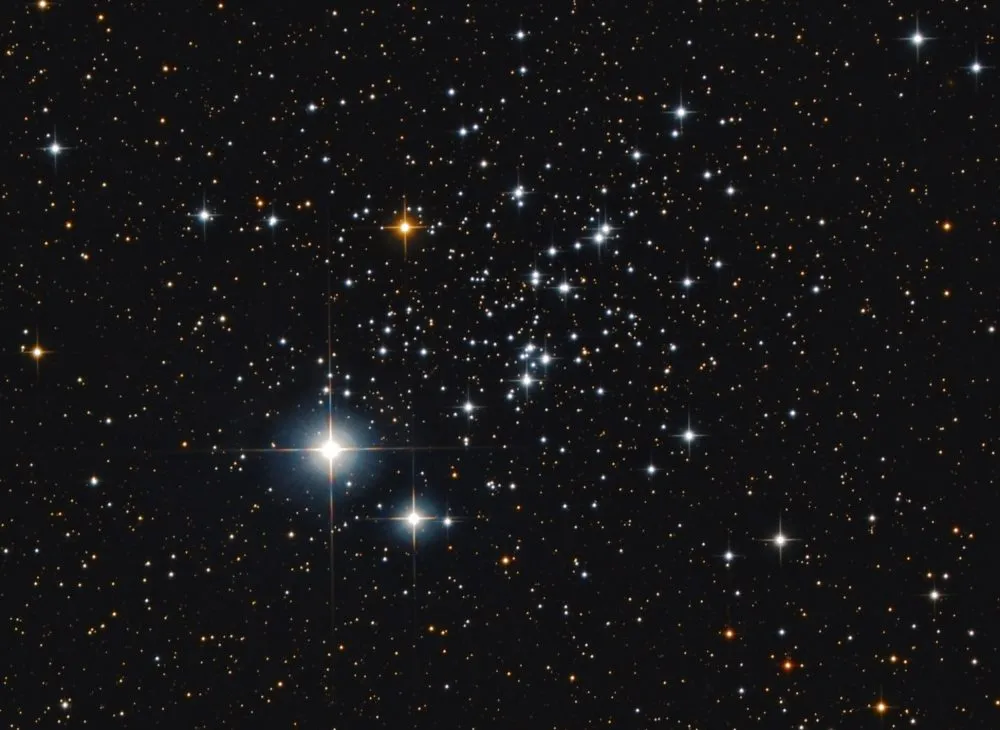
- Also designated C13; NGC 457
- RA 01h 19m 06s, dec. 58° 20’ 00”
We leave Perseus and continue into Cassiopeia, a constellation named after a queen who vainly boasted of her unrivalled beauty. There is real beauty here though with the aptly named Owl Cluster – although it is also sometimes referred to as the ET Cluster because its shape has been said to resemble the alien from the film of the same name.
The brightest star visible in the cluster is one of the owl’s eyes, mag. +5.0 Phi (φ) Cassiopeiae. It lies 2° to the southwest of Ruchbah, so it is quite easy to find. In truth, bright red Phi Cassiopeiae is not actually a member of the cluster at all, but a foreground star. All the same, it certainly adds to the view through binoculars or a small scope.
5
NGC 188
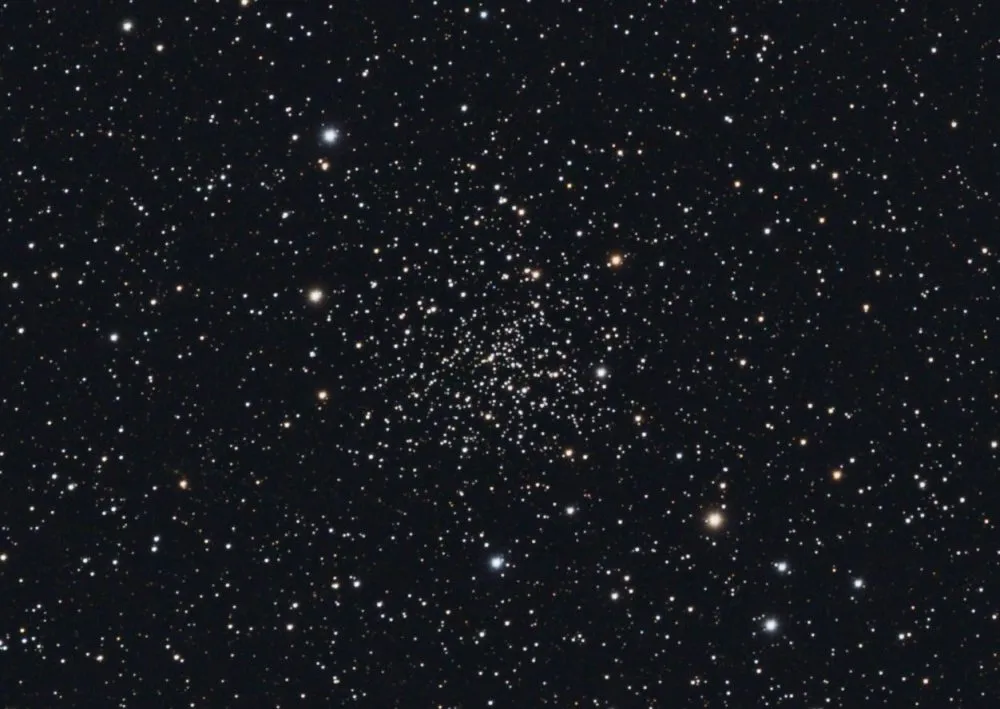
- Also designated C1
- RA 00h 44m 00s, dec. 85° 20’ 00”
Once you tick off this next object you’ll be one-third of the way through the challenge. Located just 4° to the south of the Pole Star, Polaris, open cluster NGC 188 is often ignored by observers with equatorial mounts as locating objects this close to the pole can be a bit fiddly. But what’s an observing challenge without a bit of challenge?
Unusually for an open cluster, this one comprises many older stars, more yellow than the hot white young stars that you might have expected. With a magnitude of +8.1, it’s not a naked-eye object, but a 4-inch telescope at 30x magnification will reveal it as a stretched scattering of stars set against a brighter circular core.
6
The Iris Nebula

- Also designated C4; NGC 7023
- RA 21h 00m 30s, dec. 68° 10’ 00”
Now’s a good time to take a break and warm up with a hot drink as you prepare for the second stint, which starts with the Iris Nebula. This bright reflection nebula sits in an area of sky strewn with dust and is an old favourite with astrophotographers. Locate it 3.3° southwest of mag. +3.2 Alfirk (Beta (β) Cephei) – you’ll need a large telescope to see it well.
There is a star cluster associated with the nebula (Collinder 427) but the Caldwell designation purely refers to the nebula. William Herschel discovered the nebula on 18 October 1794 describing it as “a star, seventh magnitude very much affected with nebulosity”. This star is mag. +7.3 HD 200775, a close binary that illuminates the dust surrounding it to give the Iris Nebula its shape.
7
The Fireworks Galaxy
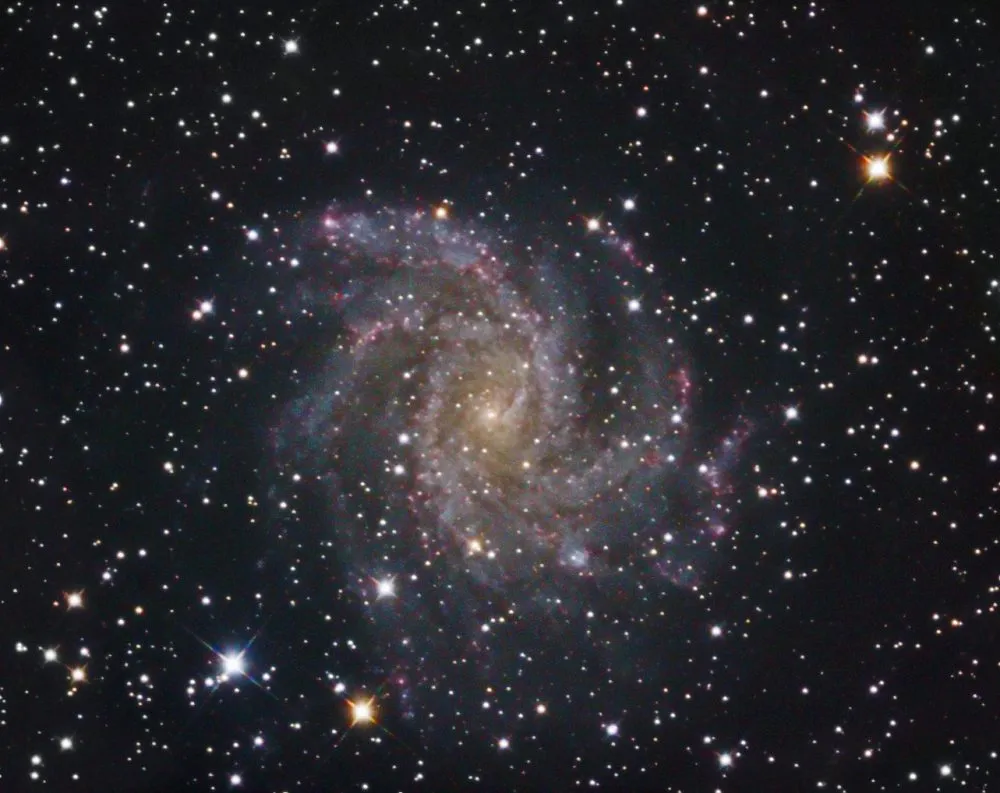
- Also designated C12; NGC 6946
- RA 20h 34m 48s, dec. 60° 09’ 00”
We’re moving southwest now, just into Cygnus for our next object. The Fireworks Galaxy is a face-on spiral that lies just over 2° southwest of mag. +3.4 Eta (η) Cephei. Although the galaxy has an apparent magnitude of +8.9, its relative brightness is spread over a wide area, so it appears dimmer than you might expect despite its common name! This situation is not helped by the galaxy’s close proximity to the Milky Way’s galactic plane, which also obscures some of its light.
The core of the Fireworks Galaxy is visible in a 4-inch telescope, but to discern its spiral arms you’ll need a 10-inch aperture at least. The galaxy is also something of a supernova hotspot, with eight having been counted since 1917 – fireworks indeed.
8
The Cocoon Nebula
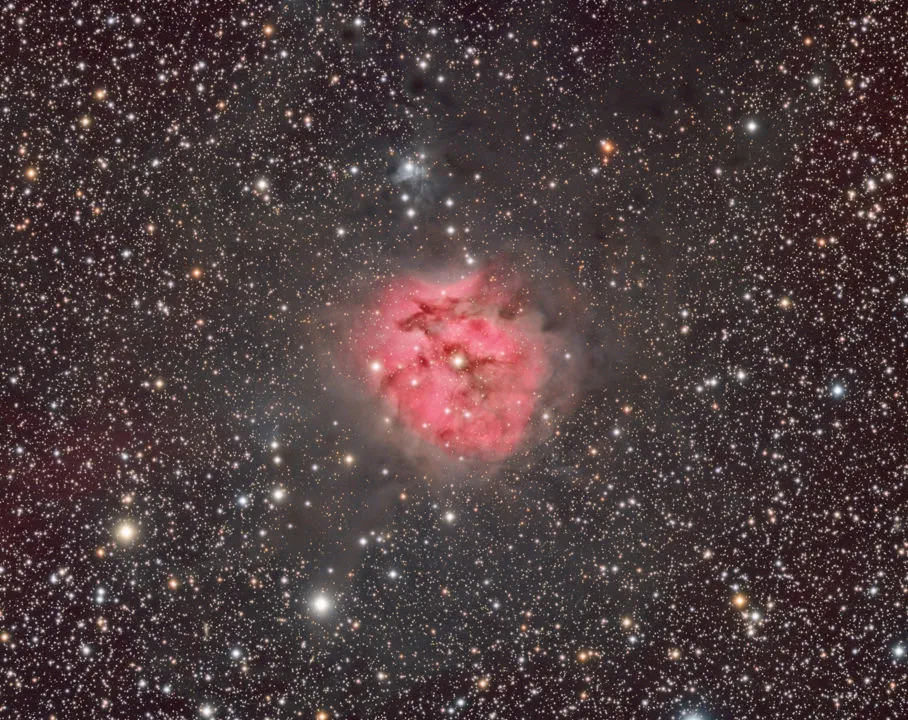
- Also designated C19; IC 5146
- RA 21h 53m 24s, dec. 47° 16’ 00”
Remaining in Cygnus, our next stop is the fascinating Cocoon Nebula. In photographs this almost circular emission nebula appears to have carved a path through the stars but this is just an illusion! The nebula’s location just happens to coincide with the eastern edge of a fine example of dark nebulosity, Barnard 168. This dark lane of light-absorbing dust can be easily spotted through a pair of binoculars as it meanders its way across the sky.
To locate the nebula, sweep 2.3° southeast of mag. +4.3 Pi2 (π2) Cygni. A 4-inch telescope will show the nebula as a hazy circular patch, but a 10-inch or larger instrument with either a hydrogen-beta or ultra-high contrast filter will offer an improved view, cutting down the light from two bright embedded stars.
9
The North America Nebula
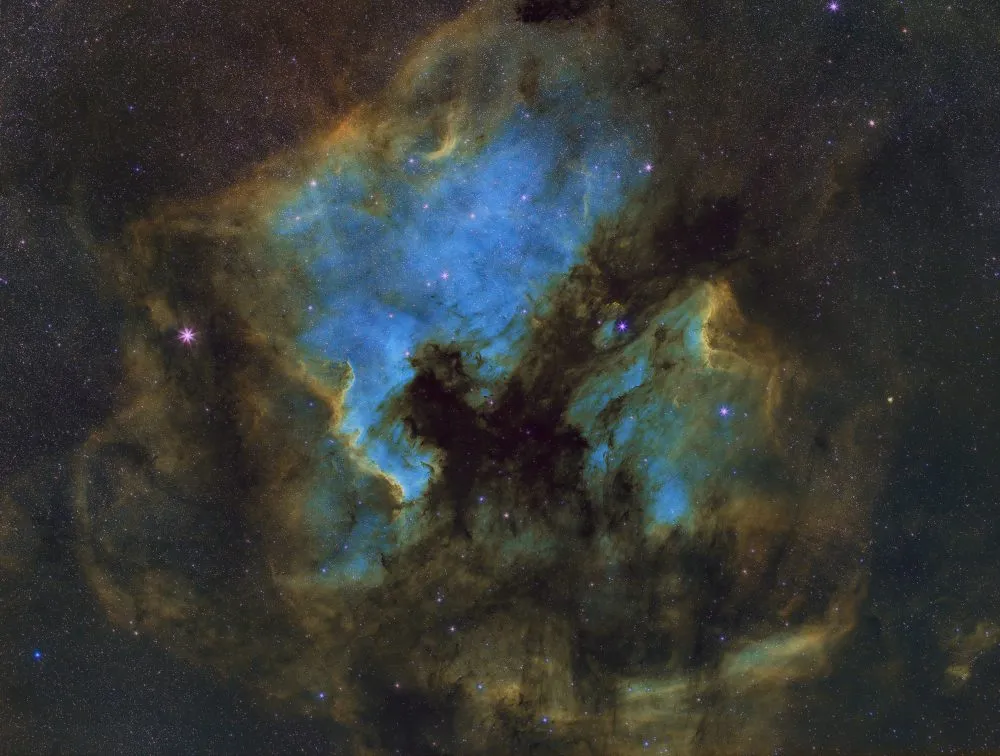
- Also designated C20; NGC 7000
- RA 20h 58m 48s, dec. 44° 20’ 00”
A trip around Cygnus wouldn’t be complete without a visit to the North America Nebula. On a crisp, clear night, the nebula can just be seen with the naked eye as a rich area of nebulosity. For imagers this is
an ideal object for hydrogen-alpha filtering, but for observing binoculars or a 4-inch telescope at very low magnification are the instruments of choice.
If you have access to a larger scope however, it is well worth seeking out open clusters NGC 6996 and NGC 6997, which are embedded within the nebulosity. Find the nebula by imagining a line from mag. +3.8 Omicron1 (ο1) Cygni through mag. +1.3 Deneb (Alpha (α) Cygni), then extend it half as much again.
10
The Blue Snowball
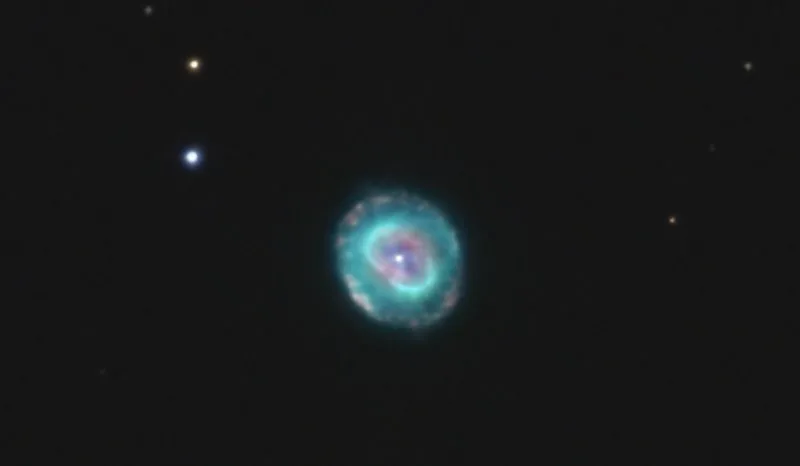
- Also designated C22; NGC 7662
- RA 23h 25m 54s, dec. 42° 33’ 00”
Time for another constellation and a very different object indeed. Planetary nebulae form when old stars are no longer able to support fusion at their cores and they start to collapse in on themselves. The high core temperature generated by this drives the outer gas layers away; the core’s energy causes the now distant gas clouds to glow.
One such nebula is the beautiful Blue Snowball in which ultraviolet light from the hot core has excited the surrounding gas molecules and the strong emission from ionised oxygen produces a gorgeous bluish hue. Through a small telescope, the nebula looks like a fuzzy star, but a larger scope will resolve the disc and the darker central region. The nebula lies 4.5° east of mag. +3.6 Omicron (ο) Andromedae.
11
NGC 2403
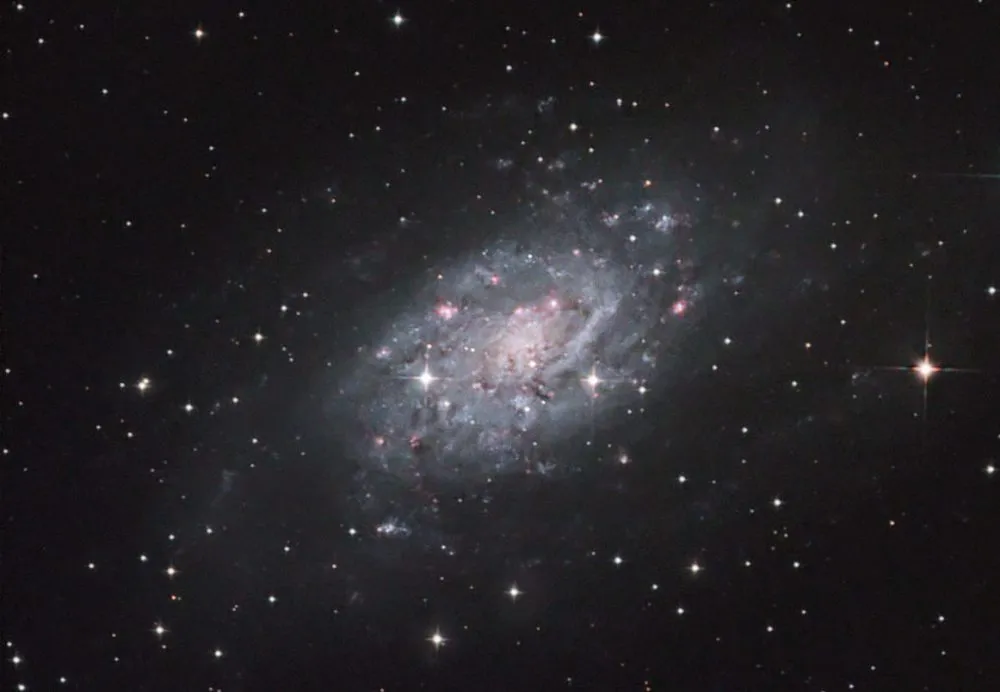
- Also designated C7
- RA 07h 36m 54s, dec. 65° 36’ 00”
We’re two-thirds of the way through now so it’s definitely time for another drink and warm-up. Our first object in the final stint is spiral galaxy NGC 2403 in Camelopardalis, also known as Caldwell 7. It has an appearance very similar to that of the Triangulam Galaxy, with numerous HII star-forming regions within its two layers of spiral arms.
Shining at mag. +8.4, this is one of the brightest galaxies in the sky – but again like the Triangulam Galaxy, it is large and that brightness is spread out. NGC 2403 is somewhat isolated in sparsely populated Camelopardalis. You can find it just under 8° northwest of mag. +3.3 Muscida (Omicron (ο) Ursae Majoris). A 4-inch telescope will show an elongated hazy patch but you’ll need a 12-inch telescope
to view the spiral arms.
12
The Intergalactic Wanderer
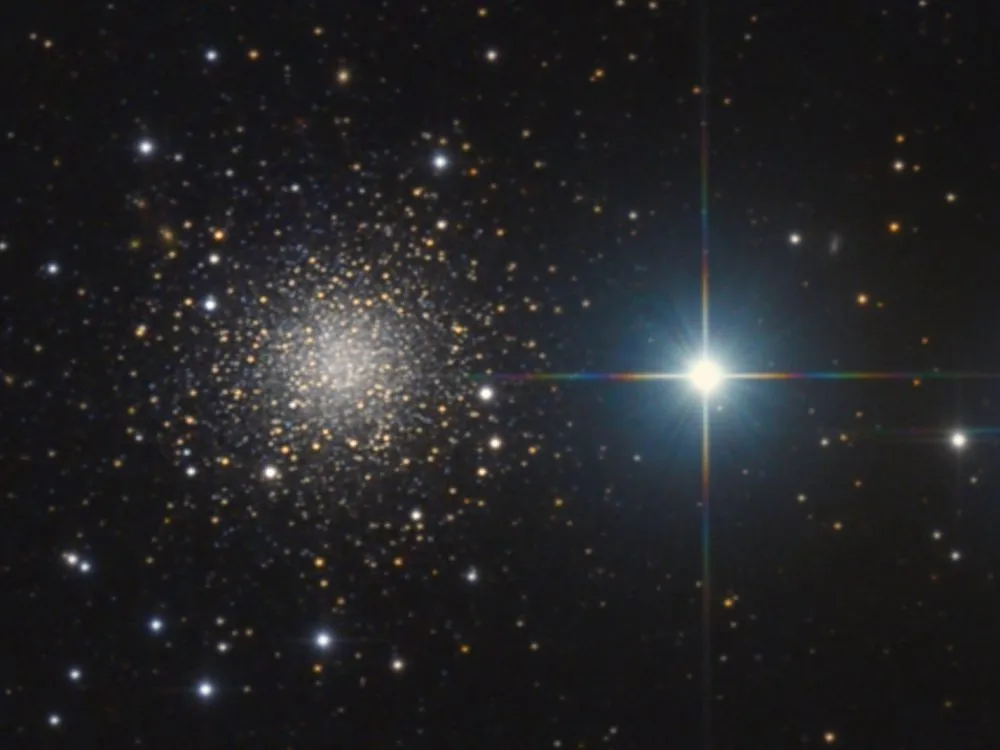
- Also designated C25; NGC 2419
- RA 07h 38m 06s, dec. 38° 53’ 00”
A quick hop southwards into Lynx will take us to a distant globular cluster known as the Intergalactic Wanderer (one of our favourite globular clusters), as it was originally believed to be located outside the gravitational influence of the Milky Way (something we now know to be untrue).
Discovered by William Herschel in December 1788, this cluster is one the remotest globulars ever found, at a distance of 182,000 lightyears. Look for it 7° to the north of mag. +1.6 Castor (Alpha (α) Geminorum). It’s a difficult object in a 4-inch telescope, but a 10-inch or larger will reveal its condensed core and patchy halo.
13
NGC 2392
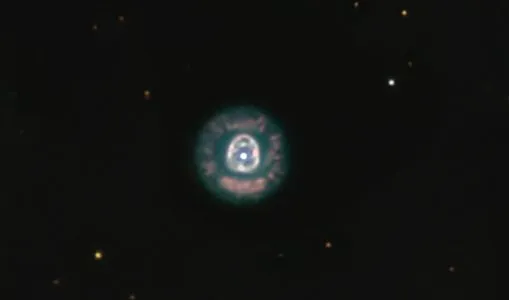
- Also designated C39
- RA 07h 29m 12s, dec. 20° 55’ 00”
We continue our journey south into Gemini, sweeping past Castor and onwards to a point 2.4° southeast of mag. +3.5 Wasat (Delta (δ) Geminorum) to find our second planetary nebula, NGC 2392. Although visible through a 4-inch telescope, with a diameter of only 15 arcseconds you’ll need at least a 6-inch telescope to show the shape of the Eskimo’s ‘face’ and the ‘furry hood’ that surrounds it.
A 10-inch or larger instrument will reveal a host of other delicate details, including two distinct shells – a bright inner mottled region with an outer faint halo separated by a dark ring. The nebula’s very distinctive appearance wasn’t lost on William Herschel who described it as “a very remarkable phenomenon” when he discovered it in 1787.
14
The Flaming Star Nebula
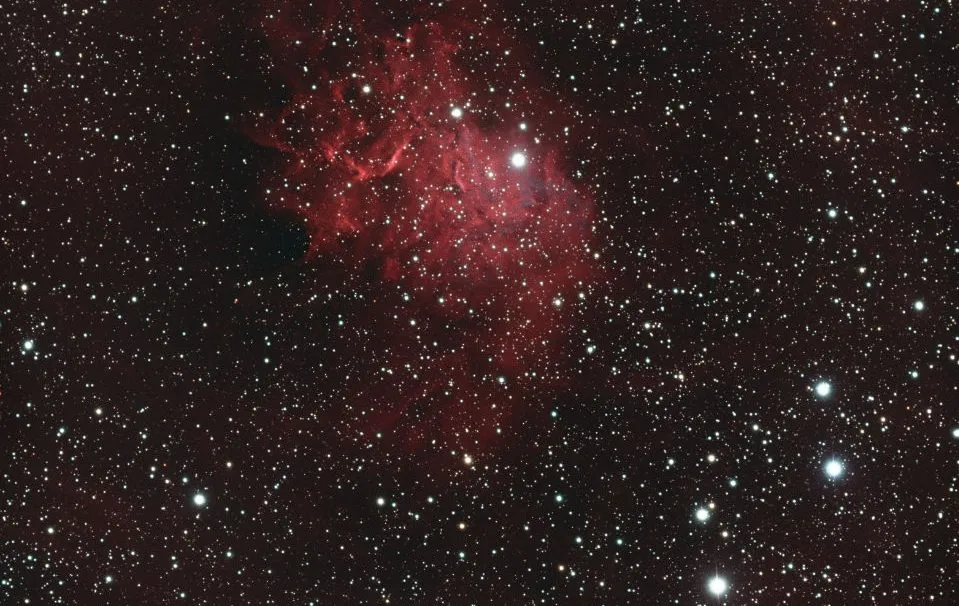
- Also designated C31; IC 405
- RA 05h 16m 12s, dec. 34° 16’ 00”
Although our next object is an astrophotographer’s dream, it is more challenging for observers. The Flaming Star Nebula lies 4.2° east northeast of mag. +2.7 Hassaleh (Iota (ι) Aurigae) and is a delightful
mix of both reflection and emission nebulosity. The star responsible for generating all the energy is HD 34078, which can be clearly seen at the heart of the nebula.
However, this star is here by chance: it’s just passing through on its long journey away from a cataclysmic interaction with the Trapezium stars in the Orion Nebula in the distant past. The roughly triangular shape of the nebula can be discerned through a 6-inch or larger telescope, but HD 34078 dominates the view. Try fitting a hydrogen-beta filter to your scope to tame the star.
15
Hubble’s Variable Nebula
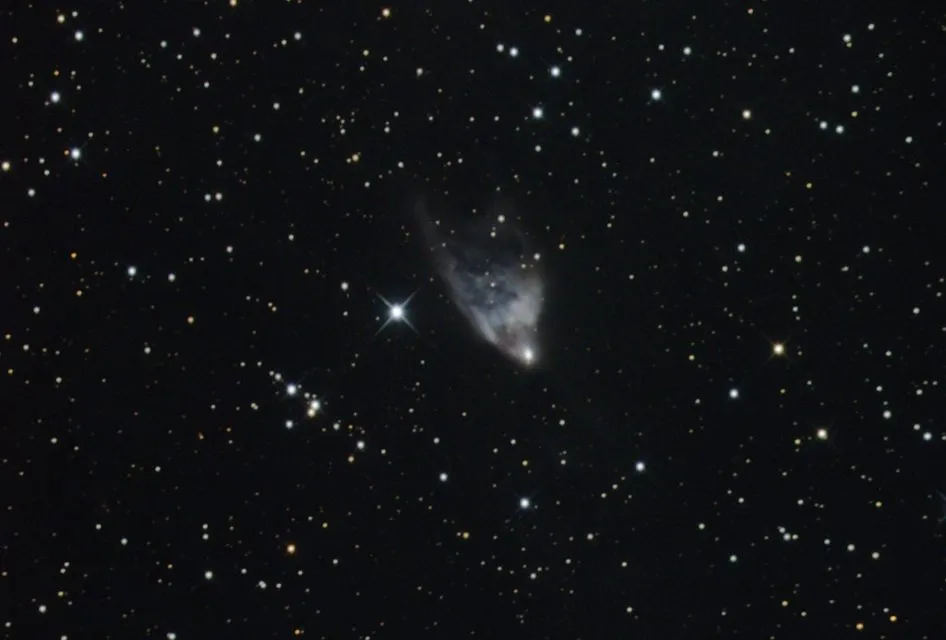
- Also designated C46; NGC 2261
- RA 06h 39m 12s, dec. 08° 44’ 00”
Congratulations, you have reached the final object, the enigmatic comet-shaped nebula NGC 2261, also known as Hubble’s Variable Nebula from a series of images captured by Edwin Hubble in January 1949. The nebula changes in brightness and to a lesser extent shape, and although it is illuminated at its head by the T Tauri variable star R Monocerotis, its variability doesn’t exactly match that of the star.
This unusual behaviour is caused by dust clouds orbiting close to the star, blocking its light and casting shadows across the nebula. Located 4.4° south-southwest of mag. +3.3 Alzirr (Xi (ξ) Geminorum), it is visible in a 4-inch telescope, though the nebula’s curved wedge shape is more clearly revealed through an 8-inch telescope at around 120x magnification.
Have you managed to observe any Caldwell objects in the night sky? Have you managed to photograph one? Let us know by getting in touch via email at contactus@skyatnightmagazine.com, or via Facebook, Twitter or Instagram.
This tour originally appeared in the December 2013 issue of BBC Sky at Night Magazine.

